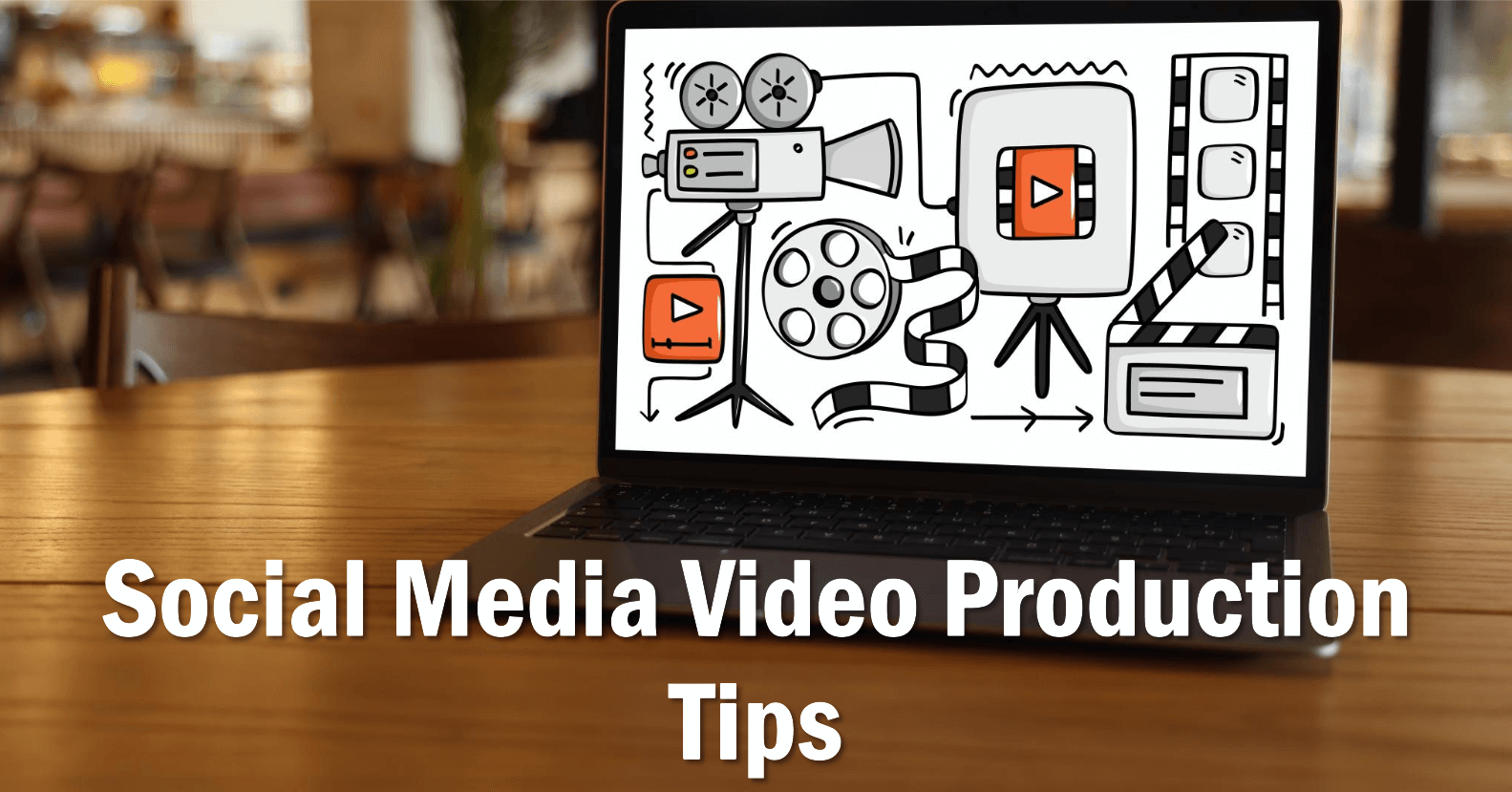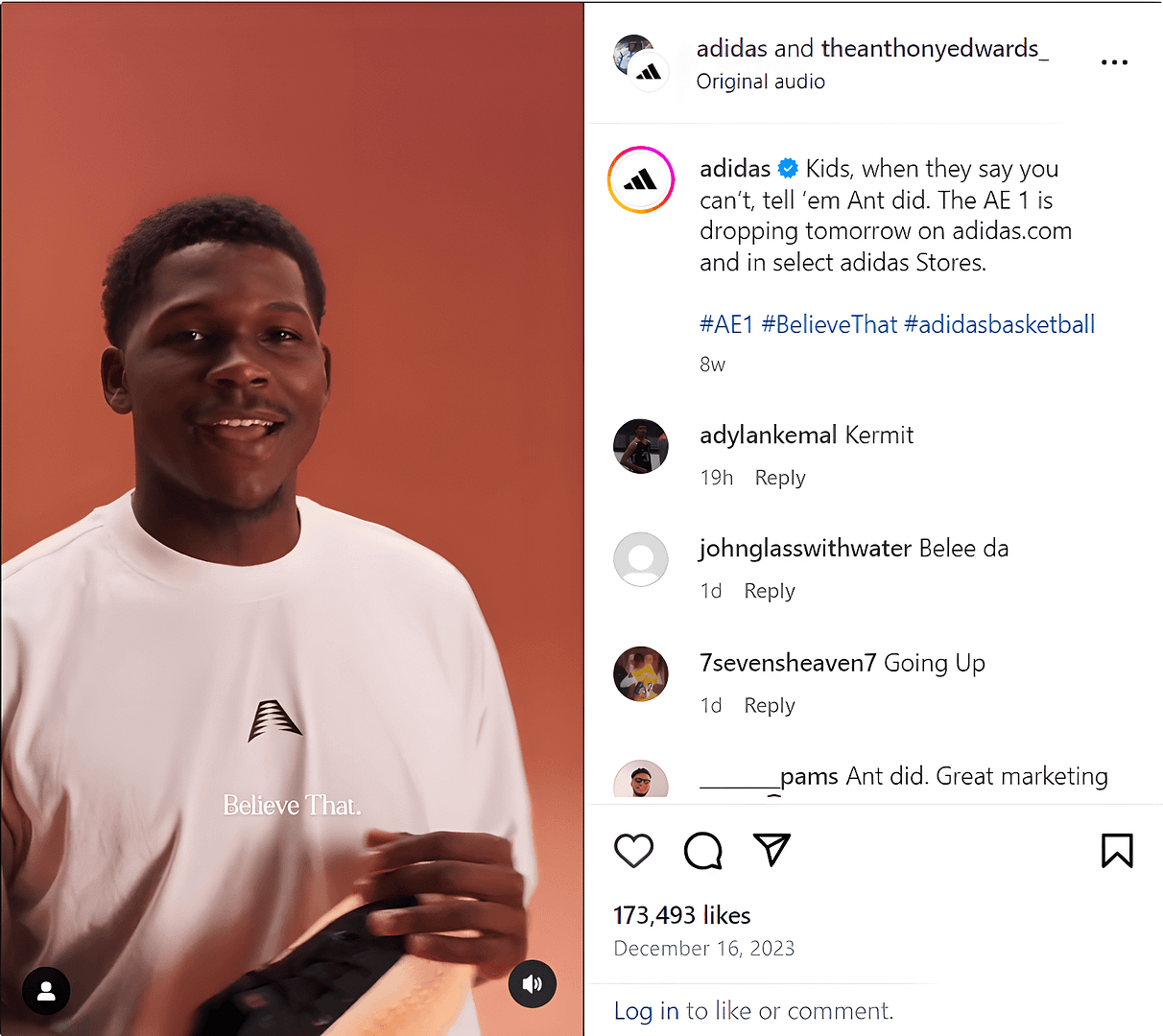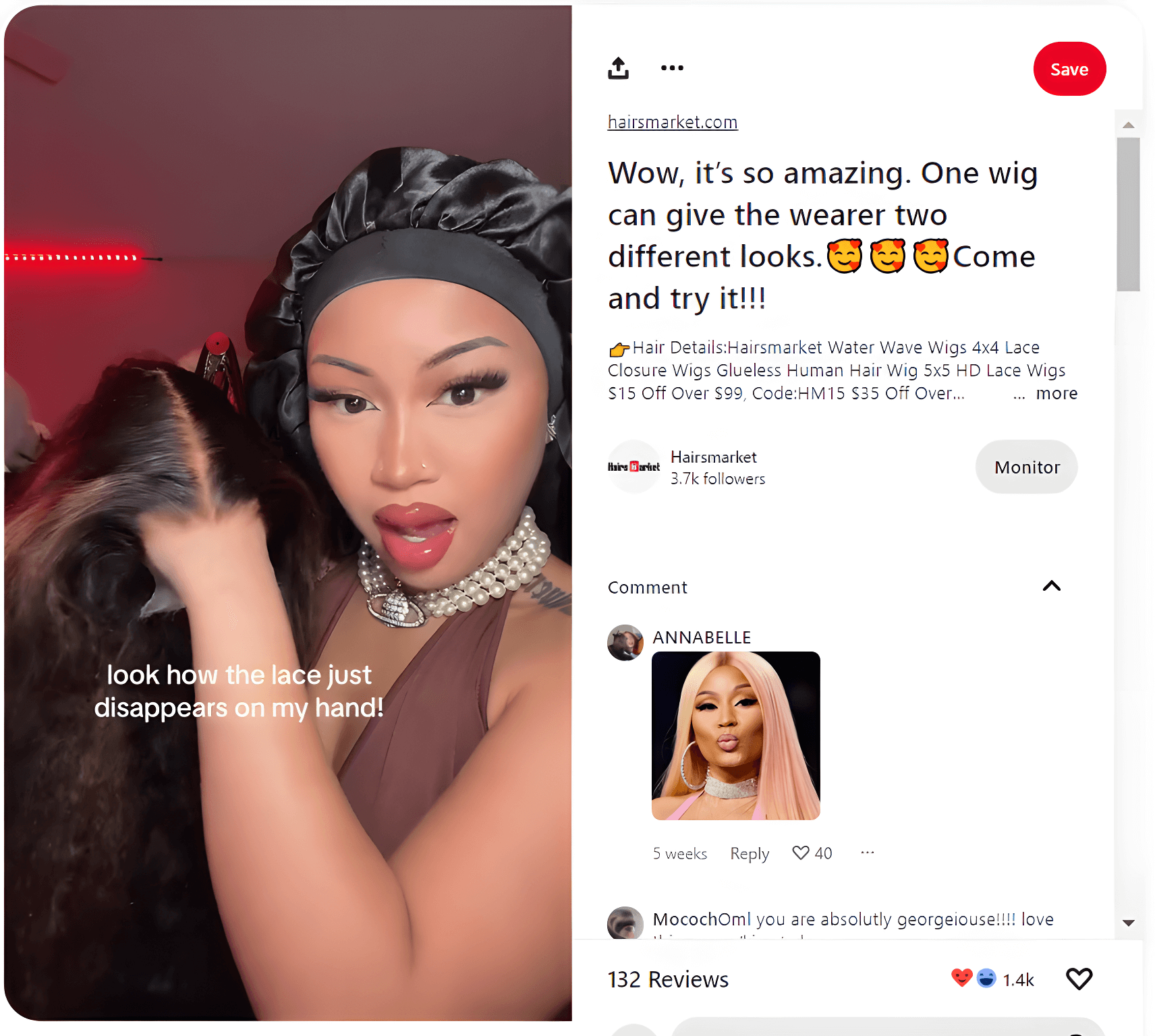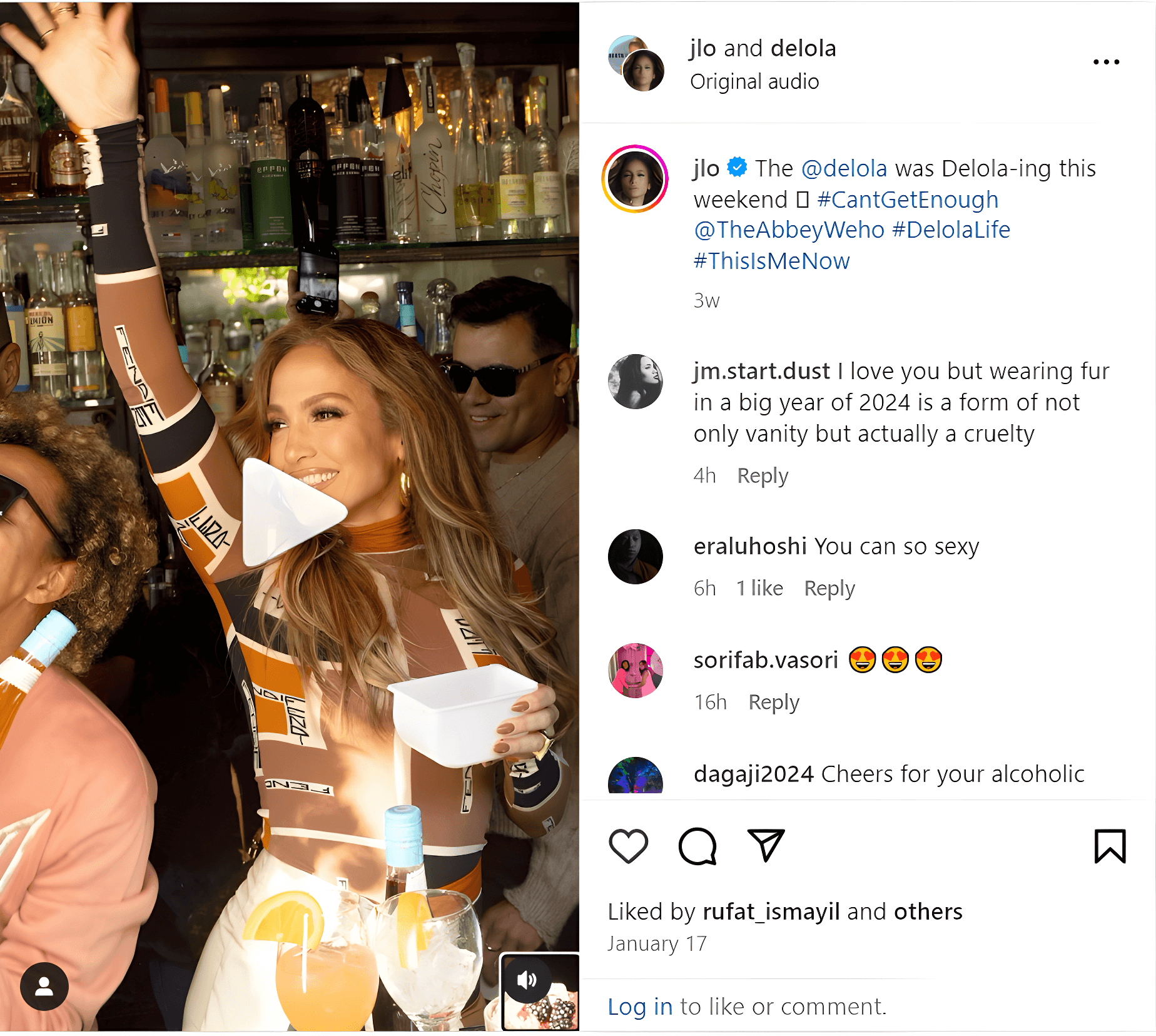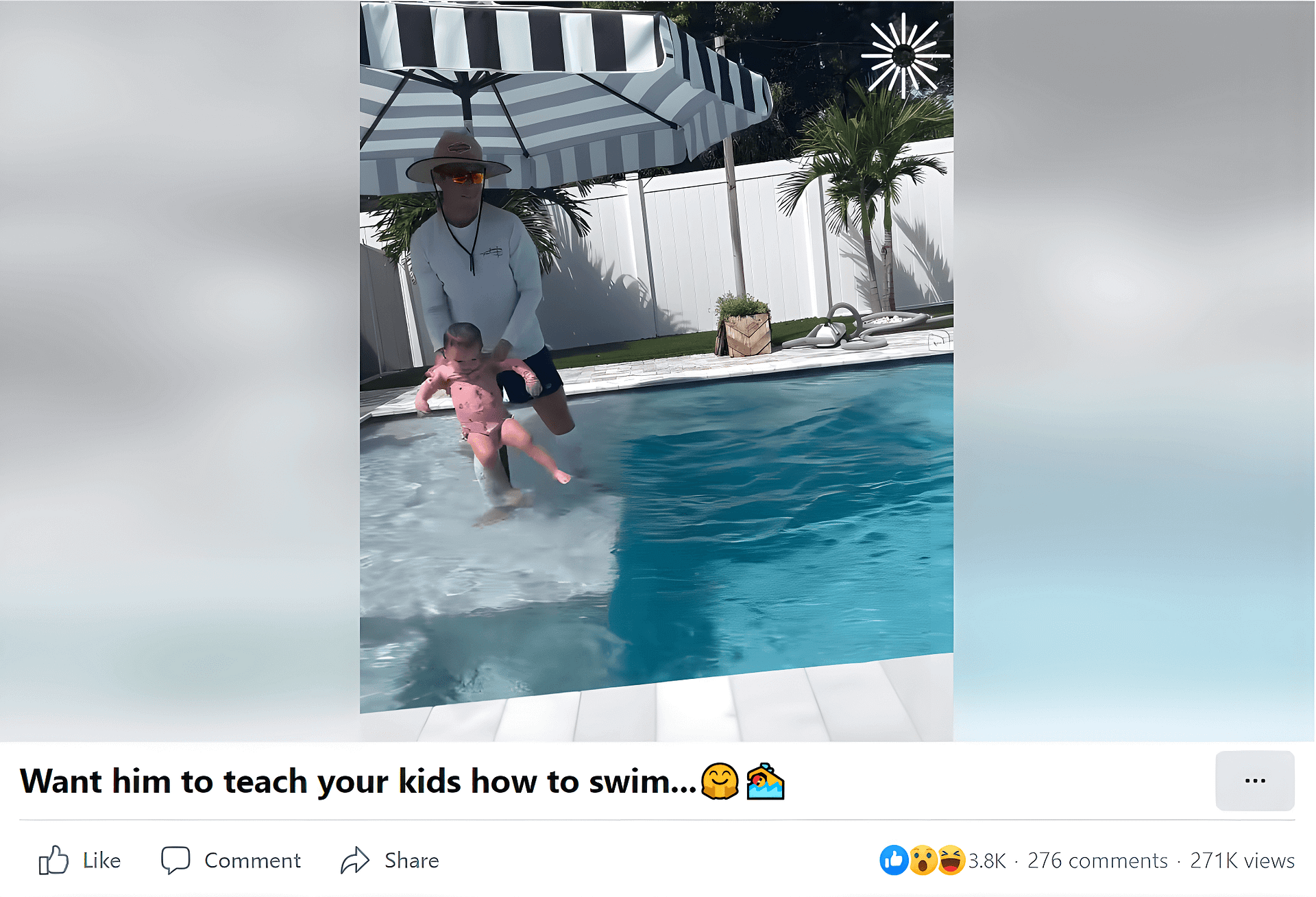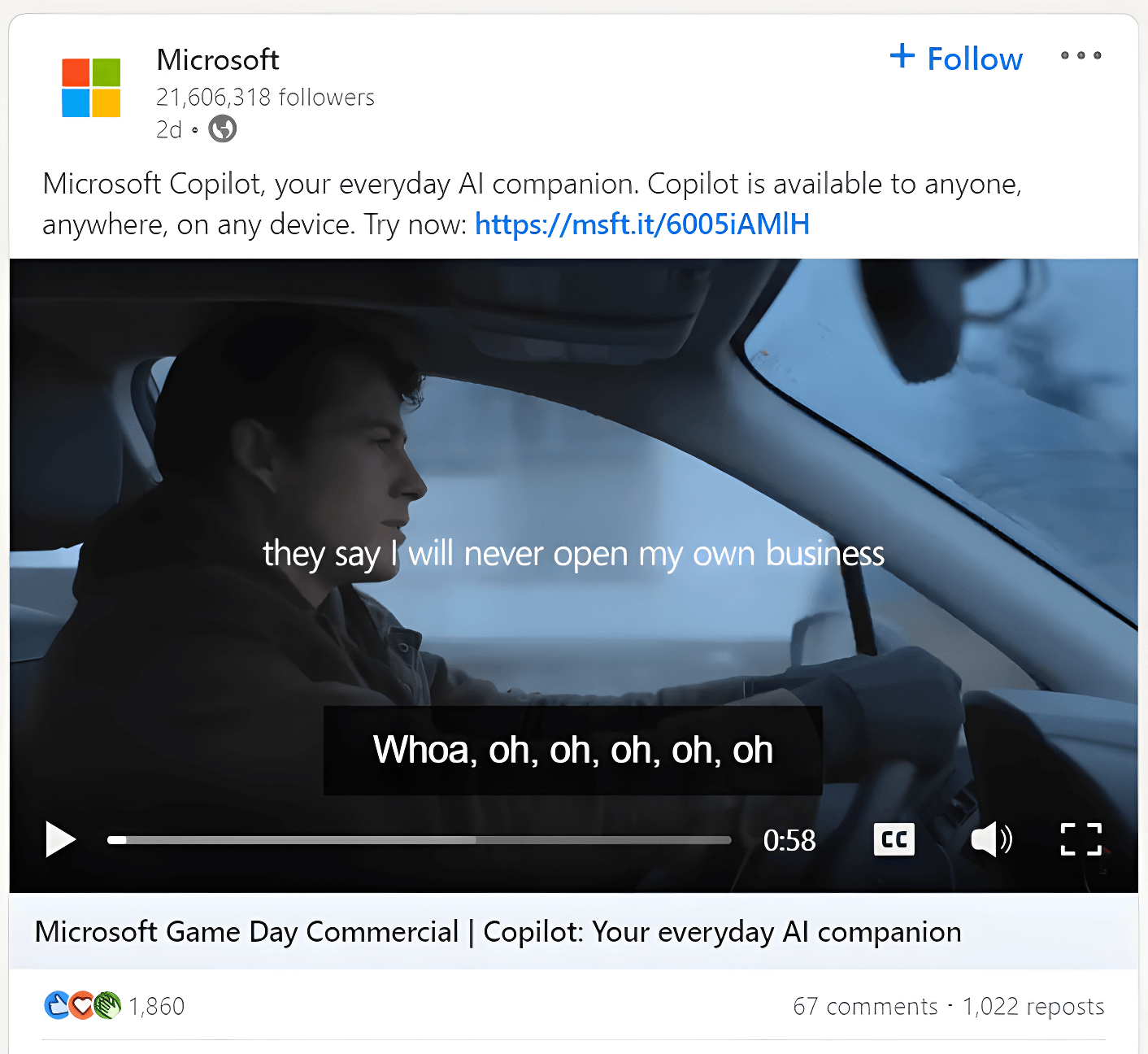Social Media Video Production: +10 Smart Tips for 2024
In the fast-paced landscape of social media, video production stands as a dynamic force shaping online interactions. Social media video production isn’t just about creating captivating visuals; it’s a strategic endeavor aimed at engaging audiences in the digital realm.
In the dynamic world of social media, staying ahead of the curve is not a choice; it’s a necessity. Optimizing for 2024 trends is the key to ensuring your content not only survives but thrives in the competitive digital space.
The following article will unravel a curated collection of 10 smart tips, each meticulously tailored for social media video production in 2024. As we delve into each tip, the aim is not only to elucidate the ‘what’ but also to delve into the ‘why’ and ‘how’.
We’ll see actionable steps and real-world examples from brands and individuals who have mastered the art of social media video production.
#1. Understanding your audience
The utility of comprehending your audience lies in the ability to create content that aligns with their interests, preferences, and behaviors.
In the dynamic landscape of social media, where attention spans are limited, and competition is fierce, tailoring your videos to your audience increases the likelihood of capturing their attention and fostering engagement.
This tip is not a one-time strategy but a continuous practice woven into the fabric of your content creation process. Initiate audience analysis during the planning phase of your video production and revisit it regularly to adapt to evolving viewer trends and preferences.
Conducting audience research involves leveraging analytical tools and social media insights. Delve into demographic data, study audience behavior, and explore their online interactions.
Utilize surveys and engage directly with your audience through comments and messages to glean qualitative insights. The key is to create a comprehensive profile that informs your content strategy.
Several videos exemplify the successful application of understanding the audience:
- Nike’s “Dream Crazier” campaign is a standout example, resonating with their target demographic by tapping into empowering narratives.
- Apple consistently applies this tip during product launch events, tailoring presentations to captivate their tech-savvy audience.
#2. Planning your content
The usefulness of this tip extends beyond mere organization; it serves as the bedrock for creating compelling and impactful videos. Planning allows you to align your content with overarching goals, ensuring that each video contributes cohesively to your brand narrative.
Planning your content is not a step reserved for specific phases but a continuous process integrated into every stage of video production. It commences during the initial ideation and extends through scripting, shooting, and editing.
Begin by defining the purpose of each video – whether it’s to educate, entertain, or inspire. Create a content calendar to map out your video releases, ensuring consistency and strategic alignment.
Examining successful instances of content planning reveals noteworthy examples.
- TED Talks, renowned for their thought-provoking content, meticulously plan each talk to ensure a cohesive and impactful viewer experience.
- Furthermore, the Dollar Shave Club’s viral launch video strategically planned humor and product information, resulting in widespread engagement.
#3. Optimizing for mobile
Optimizing content for mobile platforms ensures that your videos are not just visually appealing but also accessible on the devices most commonly used by your target audience.
This optimization directly contributes to maximizing the reach and impact of your social media video content.
To effectively optimize for mobile, consider factors such as video format, aspect ratio, and file size. Choose a format that is widely supported on various mobile devices, and prioritize vertical or square aspect ratios to suit mobile screens.
Compress videos without compromising quality to facilitate quicker loading times, which is crucial for retaining viewer interest on mobile platforms.
#4. Leveraging AI techniques
The utility of incorporating AI lies in its ability to enhance various aspects of video creation, from content optimization to audience targeting. AI can analyze vast datasets at unparalleled speeds, providing insights that can significantly elevate the quality and impact of your videos.
To effectively leverage AI techniques in social media video production, start by utilizing AI tools for data analysis. Platforms like Google Analytics and social media insights offer AI-driven analytics that can unveil valuable trends and patterns in viewer behavior.
AI-powered editing tools, such as Adobe Sensei, can streamline the editing process, automatically identifying optimal cuts and enhancing visual elements.
Embrace AI-driven content recommendation systems to suggest personalized video topics based on viewer preferences, ensuring your content remains relevant.
The Weather Channel’s use of IBM Watson’s AI for creating localized weather reports showcases the power of AI in personalizing content for diverse audiences.
YouTube’s recommendation algorithm, driven by AI, curates video suggestions based on individual viewing history, maximizing user engagement. Moreover, Netflix’s dynamic content recommendations, powered by AI, contribute to a highly personalized viewing experience.
Learn more: 11+ YouTube SEO courses to rank #1 on YouTube (Free & Paid)
#5. Incorporating interactive elements
The incorporation of interactive elements is invaluable for social media video production as it transcends the limitations of traditional one-way communication.
By allowing viewers to interact with the content, whether through polls, quizzes, or clickable elements, creators can elicit immediate responses, gather valuable feedback, and tailor subsequent content to the preferences and interests of their audience.
This interactive approach is particularly impactful when seeking to elevate audience engagement, gather insights, or create a more dynamic narrative.
To effectively incorporate interactive elements into your social media video production, consider the platform’s features and audience preferences.
Platforms like Instagram and YouTube offer tools such as polls, questions, and clickable annotations. Ensure that the interactive elements seamlessly blend into the narrative, enhancing rather than interrupting the viewer’s experience.
Get ready for an epic adventure with this Clash of Clans video ad featuring the iconic Hog Rider. The video opens with a thrilling battle cry and showcases the Hog Rider in action, charging through enemy defenses with his trusty hammer. This video allows viewers to interact the screen and have a 360 degree vision through the eyes of the main character.
#6. Mastering the art of captions
Captions serve as more than just textual accompaniments; they are a key component in making your videos accessible, engaging, and comprehensible.
By incorporating well-crafted captions, you open the door to a broader audience, including those with hearing impairments, and improve overall viewer retention.
Consideration for captions begins during the scripting phase, ensuring that spoken content is accurately transcribed and complemented with concise, compelling text.
During editing, captions should be seamlessly integrated, aligning with the visual elements and enhancing the overall viewer experience. Post-production captions continue to play a crucial role in social media video optimization.
You can begin by ensuring accurate transcriptions by using tools like Otter.ai or YouTube’s automatic captioning feature.
Tailor captions to complement the visual content, conveying essential information concisely and engagingly. Consider font styles and sizes for readability, and use punctuation and formatting to create a seamless reading experience.
Several videos exemplify the successful application of mastering the art of captions:
- The “Tasty” series on BuzzFeed’s food channel consistently integrates engaging captions, providing quick recipe details and enhancing viewer comprehension.
- National Geographic’s wildlife documentaries strategically employ captions to convey scientific information, ensuring educational value for diverse viewers.
#7. Utilizing user-generated content
The utilization of user-generated content is invaluable as it capitalizes on the authenticity and diverse perspectives of the audience.
Incorporating content created by users not only enhances the variety of your video offerings but also establishes a sense of community involvement, fostering a deeper connection between the audience and the brand.
UGC serves as a testament to the real-world impact of the brand or product, creating a more relatable and trustworthy image.
The user-generated content tip is particularly advantageous when seeking to build a sense of community, increase brand loyalty, or showcase the genuine experiences of users.
To effectively utilize user-generated content in social media video production, create platforms for audience participation. Encourage users to share their experiences, opinions, or creative interpretations related to your brand or products.
Leverage dedicated hashtags, contests, or challenges to streamline the collection process. Curate the most compelling UGC and integrate it seamlessly into your video content, ensuring a cohesive and engaging narrative that resonates with a broader audience.
These videos not only showcase the diverse experiences of the audience but also empower users by giving them a platform to contribute actively to the brand’s story.
#8. Going live effectively
Going live effectively is a potent strategy that adds a dynamic and real-time dimension to social media video production.
Live videos generate a sense of immediacy, fostering a direct and authentic connection with the audience. This real-time interaction builds engagement, trust, and a unique viewing experience, making it a valuable tool in the arsenal of social media content creators.
Live videos are particularly impactful for announcements, behind-the-scenes glimpses, product launches, Q&A sessions, and interactive events. Consider incorporating live sessions into your content calendar during key moments when direct audience engagement is paramount.
Effectively going live requires careful planning and execution:
- Begin by promoting the upcoming live session across your social media platforms, creating anticipation and ensuring a wider audience.
- Have a clear agenda or theme for the live session to maintain structure and engage viewers.
- Interact with the audience in real-time, responding to comments and questions, making them feel actively involved.
- Leverage the platform’s features, such as Instagram’s Live Q&A or Facebook’s Live Polls, to enhance interactivity.
Numerous videos illustrate the effectiveness of going live:
- Apple’s product launch events often incorporate live elements, allowing viewers to witness announcements in real-time.
- Red Bull’s live coverage of extreme sports events immerses viewers in the adrenaline-pumping action, fostering a sense of shared experience.
- Social media influencers like Gary Vaynerchuk regularly use live sessions to connect with their audience, answering questions and providing real-time insights.
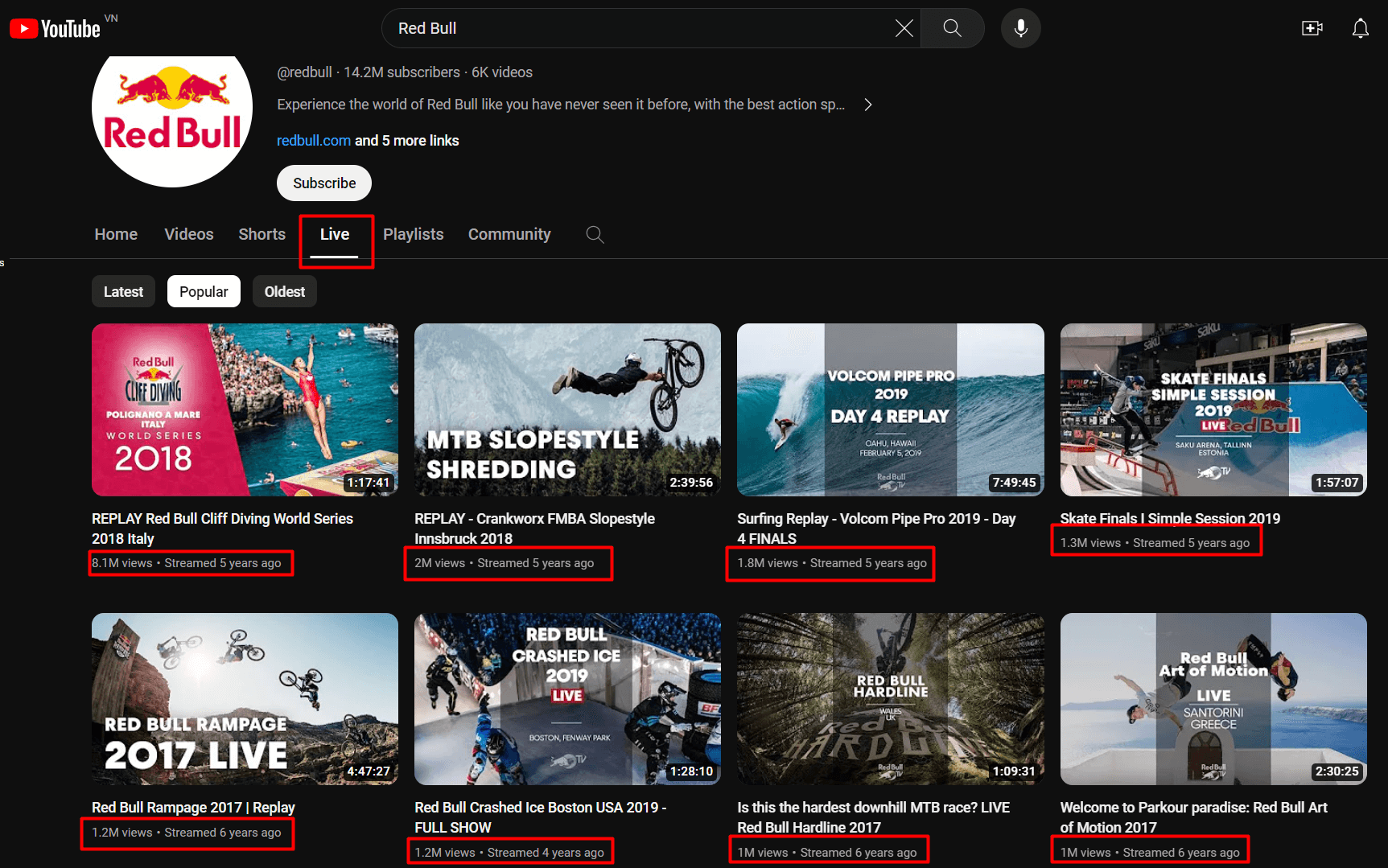 Image source: youtube.com
Image source: youtube.com
#9. Staying consistent with branding
Staying consistent with branding is crucial as it establishes a strong and recognizable identity for your brand amidst the sea of content on social media platforms.
Consistency fosters brand recall, making it easier for viewers to associate your videos with your brand and its values. The consistency with branding tips is particularly crucial when seeking to build and reinforce brand identity, irrespective of the content’s purpose.
To effectively stay consistent with branding in social media video production, establish clear brand guidelines encompassing visual elements, messaging, and tone. Ensure that each video aligns with these guidelines, using consistent colors, fonts, and brand elements.
Infuse your brand’s unique personality into the narrative and messaging, reinforcing the core values that define your identity. Consider creating an intro or outro sequence that visually represents your brand, becoming a signature element across all videos.
Examples of videos effectively staying consistent with branding include Nike and Apple. Their videos and social materials not only align with the visual aesthetics of the respective brands but also consistently convey the brand’s messaging and values.
#10. Tracking and analyzing performance
Tracking and analyzing performance in social media video production is a vital strategy that ensures continuous improvement and relevance.
By scrutinizing metrics and insights, content creators gain valuable data on audience engagement, reach, and preferences, enabling them to refine their approach and produce more impactful videos.
The utilization of tracking and analyzing performance is an ongoing process, embedded into every stage of social media video production.
From the initial planning phase to post-release evaluation, monitoring key performance indicators (KPIs) ensures that your content aligns with your goals and resonates effectively with your audience.
Effectively tracking and analyzing performance involves utilizing the analytics tools provided by social media platforms. Platforms like YouTube, Instagram, and Facebook offer insights into metrics such as views, watch time, engagement, and audience demographics.
Regularly review these metrics to identify trends, successful content elements, and areas for improvement. Adjust your content strategy based on these insights to continually enhance performance.
On YouTube, creators like Casey Neistat leverage analytics to understand viewer behavior and preferences, refining their content strategy to maintain high levels of engagement.
Moreover, beauty brand Sephora utilizes Instagram insights to track the performance of makeup tutorial videos, tailoring future content to match customer interests.
Bonus: video production tips for top social media platforms
YouTube
YouTube, being a long-form content platform, thrives on informative and engaging videos. Prioritize high-quality visuals and clear audio.
Craft compelling thumbnails and titles to entice clicks, and include a strong call-to-action to encourage viewer interaction, such as likes, comments, and subscriptions. Consistency is key on YouTube, so maintain a regular upload schedule.
Learn more: 12 YouTube SEO Experts on Turbocharging Your YouTube Presence
TikTok
TikTok, with its short-form and trend-centric nature, demands swift and attention-grabbing content.
Leverage popular challenges, use trending sounds, and keep videos concise. Engage with your audience through duets and stitches, and embrace the platform’s creative features, including effects and filters.
The key to success on TikTok lies in staying authentic, embracing trends, and keeping content light-hearted.
@zachking They rejected my application to Hogwarts but I still found a way to be a wizard. 🧹#illusion #magic #harrypotter
♬ Zach Kings Magic Broomstick – Zach King
Twitter/X
Twitter’s fast-paced environment necessitates quick and impactful videos. Focus on concise messaging, incorporating captions for silent autoplay, and utilizing eye-catching visuals.
Engage with trending hashtags, reply to comments, and retweet relevant content to enhance visibility. Twitter videos are often best when they directly address current trends or provide real-time updates.
Want to see how augmented reality can enhance our drives in the future?
Watch this 👇 #THEiX #BMW #BMWCES #CES2024 @TheTechChap
The #BMW iX xDrive50: Power consumption/100 km, CO2 emission/km, weighted comb.: 22.6–19.5 kWh, 0 g. Electric range: 551–633 km. According to… pic.twitter.com/1Dm2k2t0XH
— BMW (@BMW) January 12, 2024
Pinterest, known for its visual discovery, values aesthetically pleasing and informative videos. Optimize video descriptions with keywords, utilize high-quality imagery, and incorporate vertical videos for better display.
Create engaging and actionable Pins to encourage saves and clicks. Pinterest videos often excel when they contribute to a larger thematic board or showcase step-by-step processes.
Instagram, a visually-driven platform, thrives on aesthetically pleasing content. Leverage Instagram Stories for behind-the-scenes glimpses, and IGTV for longer-form videos. Utilize Instagram Reels for short, entertaining content, and incorporate interactive elements like polls and quizzes. Consistent use of relevant hashtags and engaging captions enhances discoverability and audience interaction.
Facebook/Meta
Facebook’s diverse audience appreciates a mix of content types. Prioritize native video uploads for optimal reach and engagement. Utilize Facebook Live for real-time interaction, and incorporate subtitles for silent autoplay.
Engage with your audience through comments and messages, and consider paid promotion for broader visibility. Facebook videos that resonate often tell a compelling story or address common pain points.
LinkedIn’s professional atmosphere calls for informative and industry-relevant videos. Share thought leadership content, industry insights, and career advice. Optimize video descriptions with relevant keywords, and engage with comments to foster a professional community.
LinkedIn videos that perform well often provide valuable insights or showcase expertise within a specific industry.
Frequently Asked Questions (FAQs)
What is social media video production?
Social media video production involves creating video content tailored for social media platforms. It includes planning, shooting, editing, and optimizing videos to engage and resonate with the target audience on various social media channels.
How do you make a product video for social media?
To create a compelling product video for social media, focus on showcasing the product’s benefits, using vibrant visuals, concise messaging, and incorporating storytelling elements. Keep it brief and attention-grabbing to captivate the audience’s interest.
What does a social media videographer do?
A social media videographer specializes in capturing and editing videos specifically tailored for social media platforms. They understand the nuances of each platform, optimize content for mobile viewing, and ensure the videos align with the brand’s social media strategy.
How do I record high-quality videos on social media?
Recording high-quality videos on social media involves using good lighting, stable equipment, and a clear audio setup. Ensure your camera settings are optimized, and consider utilizing external microphones or accessories for improved video and audio quality.
How do I film my TikTok videos?
To film engaging TikTok videos, use the platform’s creative features like filters, effects, and music. Keep videos short, leverage trending challenges or hashtags, and aim for authenticity to connect with the TikTok community.
What is the best social media platform to post videos?
The best social media platform to post videos depends on your target audience and content type. YouTube is ideal for longer, informative videos, while Instagram and TikTok are effective for short, visually appealing content. Choose platforms based on your audience demographics and content strategy.
How to do video marketing?
Video marketing involves creating and sharing videos to promote a product, service, or brand. Develop a strategy, define your target audience, craft compelling content, and leverage social media platforms to reach and engage your audience effectively.
What is content in video production?
In video production, content refers to the substance and information conveyed in the video. It includes the script, visuals, messaging, and overall narrative that communicates the intended message to the audience.
What is a content production strategy?
A content production strategy outlines the plan for creating and distributing content across various platforms. It includes defining goals, target audience, content types, and the schedule for consistent and effective content delivery.
What is the difference between video editing and social media video production?
Video editing is a component of social media video production. While video editing involves refining and enhancing raw footage, social media video production encompasses the entire process, including planning, shooting, editing, and optimizing videos specifically for social media platforms.
What are the examples of video production?
Examples of video production include product demonstrations, tutorial videos, interviews, commercials, vlogs, and explainer videos. Each serves a different purpose, catering to diverse audience preferences and content goals.

